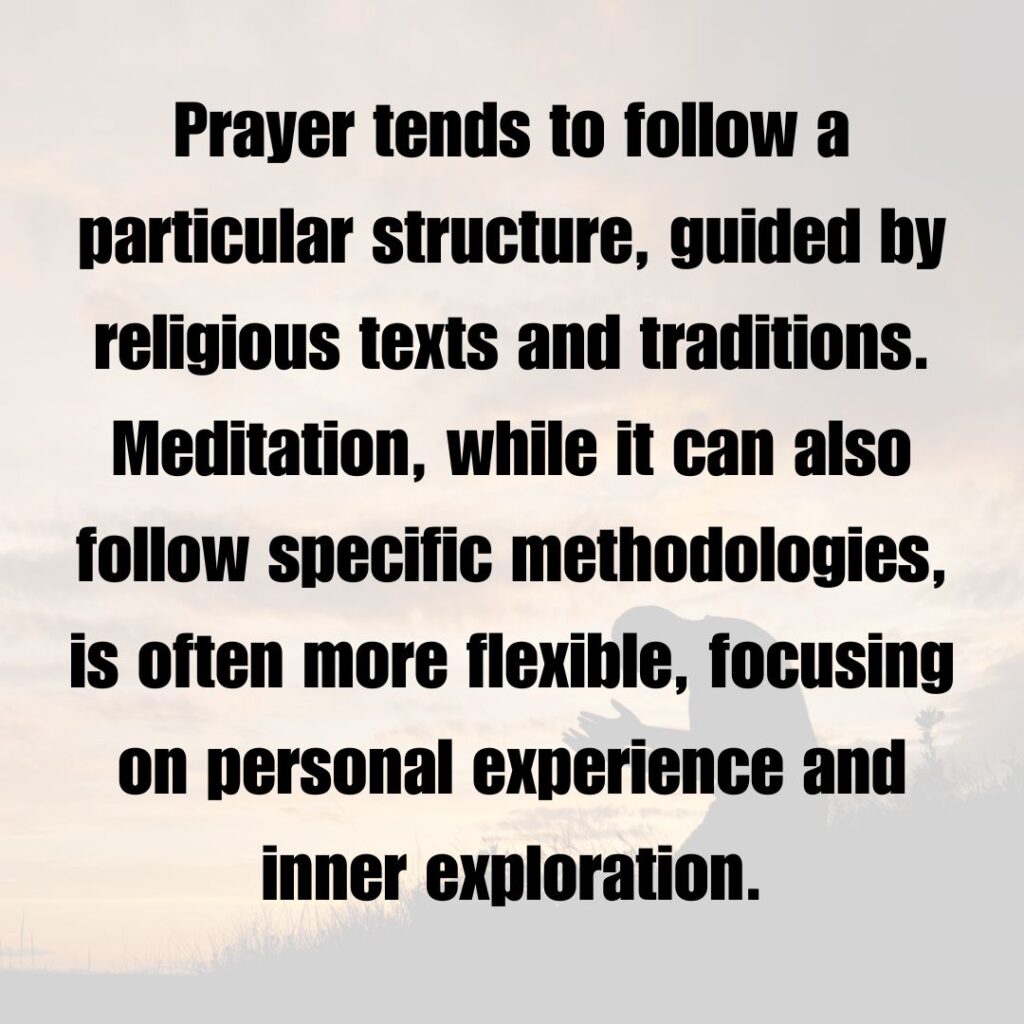Understanding the essence of prayer and meditation can significantly enhance our spiritual and mental well-being. Although these practices are often interchanged or misunderstood, they have distinct functions and impacts. This comprehensive guide will unravel the fundamental differences between prayer and meditation.
I. What is Prayer?
A. Understanding Prayer
Prayer is essentially a communication process that allows us to connect with a higher power or divine entity. It can be a heartfelt appeal, a request for divine assistance, or a simple conversation with a higher entity.
B. Different Forms of Prayer
Prayers can take various forms, such as petitions, adoration, confessions, or thanksgiving. They are typically structured and guided by specific religious texts or doctrines.
C. The Effects of Prayer
Prayer can strengthen one’s faith, provide comfort during challenging times, and cultivate a sense of gratitude. It brings peace and offers a platform for individuals to express their innermost thoughts and emotions to a higher power.
II. What is Meditation?
A. Understanding Meditation
Meditation, on the other hand, is a practice aimed at training attention and awareness, achieving a mentally clear and emotionally calm and stable state. It is primarily an inward-focused practice that emphasizes mindfulness, concentration, and relaxation.
B. Different Forms of Meditation
Various forms of meditation exist, like mindfulness meditation, transcendental meditation, Zen, loving-kindness meditation, and others. Unlike prayer, meditation does not necessarily require the involvement of a higher power.
C. The Effects of Meditation
Meditation can lead to increased self-awareness, better stress management, and improved mental clarity. It also enhances emotional health and well-being, improves attention span, and may reduce age-related memory loss.
III. Differences Between Prayer and Meditation
A. Focus and Direction
While prayer is often directed towards a divine entity and involves an active plea or dialogue, meditation focuses on the self, with emphasis on inner peace and mindfulness.
B. Intention
Prayer usually has a specific intention, such as seeking guidance, expressing gratitude, or requesting help. Conversely, meditation aims at calming the mind, fostering self-awareness and introspection, without necessarily having a specific intention.
C. Practice and Structure
Prayer tends to follow a particular structure, guided by religious texts and traditions. Meditation, while it can also follow specific methodologies, is often more flexible, focusing on personal experience and inner exploration.
IV. Are Prayer and Meditation Interchangeable?
A. Interplay Between Prayer and Meditation
While they have their differences, prayer and meditation can complement each other in a spiritual or mindfulness practice. Some traditions even see meditation as a form of prayer. Prayer can prepare the mind for meditation, while meditation can deepen the sense of connection experienced in prayer.
B. Individual Preference and Beliefs
The choice between prayer and meditation—or a combination of both—depends on an individual’s spiritual beliefs, religious background, and personal preferences. Some may find solace in prayer, while others may prefer the introspective nature of meditation.
Conclusion
While prayer and meditation have different focuses and approaches, both serve as valuable tools for spiritual growth, mental clarity, and emotional resilience. Whether you’re seeking divine connection through prayer or self-awareness through meditation, both practices offer profound benefits to enhance your overall well-being.


